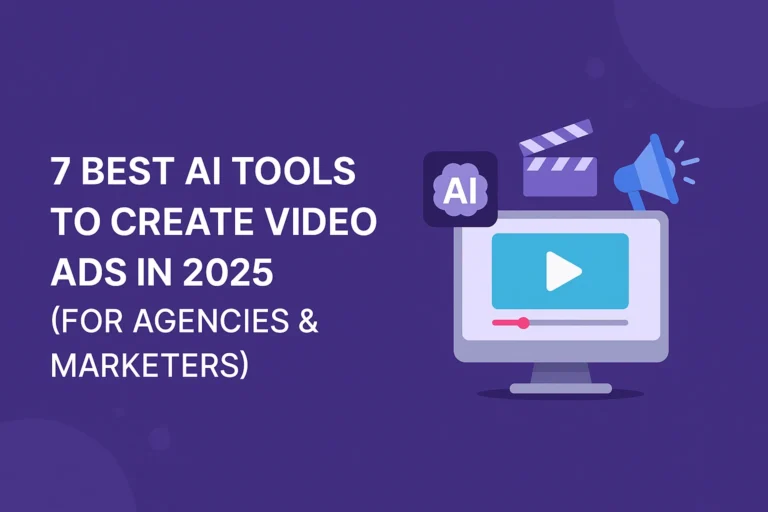Please note I've preserved the exact image and formatting while making the content more natural and engaging:
Navigating Today's Social Landscape With Purpose

With over 5 billion social media users worldwide, businesses have incredible opportunities to connect with their audiences. But making meaningful connections requires more than just showing up – it demands a thoughtful strategy focused on the right platforms and approaches. Success comes from understanding not only what content to share, but choosing the ideal channels and methods to reach your specific audience.
Identifying Your Key Platforms
Rather than trying to maintain a presence everywhere, focus your efforts where your target audience already spends their time. Take Instagram, for instance – with 2 billion monthly active users and engagement rates four times higher than Facebook, it's perfect for reaching younger audiences who prefer visual content. The platform also delivers an impressive 27.4% ROI, making it particularly valuable for businesses seeking measurable results. For B2B companies targeting professionals, LinkedIn often proves more effective. By concentrating on platforms that align with your audience, you can craft content that truly resonates.
This focused approach allows you to develop strategies tailored to each platform's unique strengths. The key is understanding exactly how your audience behaves within their preferred social spaces.
Understanding Platform-Specific Audience Behavior
Each social network has its own distinct culture and user expectations. For business accounts on Instagram, photo posts achieve an average 2.69% engagement rate because users actively seek inspiring visual content. LinkedIn members, in contrast, engage most with professional insights and industry expertise, making it ideal for thought leadership content and business updates.
| Platform | User Behavior | Content Preferences |
|---|---|---|
| Visual-driven, seeks inspiration and connection | High-quality images, engaging stories, short videos | |
| Professional networking, industry insights | Thought leadership articles, industry news, job postings | |
| Diverse, seeks connection and information | Varied content, community building |
By recognizing these distinct behaviors, you can shape your message for each platform's audience. This insight guides smarter content creation that speaks directly to users' needs and interests.
Creating Content That Connects
Making content that truly resonates requires getting to know your audience on a deeper level. What challenges do they face? What solutions can you provide? What format will best deliver value to them? With 44% of people preferring to learn about products through short videos, and 81% wanting more video content from brands, mastering quick, compelling video is essential. But it's not just about promotion – focus on delivering real value through educational content, entertainment, behind-the-scenes glimpses, and authentic user stories that showcase your brand naturally. When you prioritize helping and connecting with your audience over selling to them, you build the kind of lasting relationships that drive sustained engagement.
Creating Video Content That Actually Converts
Video has become an essential tool for reaching audiences online. Research shows that 44% of people prefer learning about new products through video compared to other formats. However, creating videos that drive real business results requires more than just hitting record – it demands a strategic approach focused on capturing attention and inspiring action.
Why Some Videos Capture Attention While Others Fall Flat
The success of video content hinges on three key elements. First, you need to deeply understand your target viewer – a TikTok video for Gen Z requires a very different approach than a LinkedIn video for professionals. Second, you must grab attention in those critical first few seconds when viewers decide whether to keep watching or scroll past. Third, even short videos need a compelling story arc that keeps viewers engaged until the end.
Practical Frameworks For Creating Engaging Videos
For short-form content on platforms like TikTok or Instagram Reels, focus on delivering one clear, impactful message. This could be demonstrating a product feature, sharing a useful tip, or giving viewers a behind-the-scenes peek. For example, if you're a clothing brand, create a quick Reel showing off a new collection, set to trending music, with a direct link to purchase.
Longer YouTube videos give you space to go deeper with detailed tutorials, comprehensive product reviews, or in-depth customer stories. But even with extended run times, strong pacing is essential. Break your content into clear segments and use visuals, music and transitions to maintain interest throughout.
The Power of Storytelling and Audience Retention
Think about structuring your video like a mini-movie, with a clear beginning, middle and end – even in just 15 seconds. Start by introducing the key problem or topic, present your solution or main message, and close with a specific call-to-action, whether that's visiting your website or following your social channels. Also, always include captions since many people watch without sound. This simple addition makes your content accessible to a much wider audience.
Real-World Examples and Key Takeaways
Take GoPro's YouTube channel as an example of video marketing done right. Rather than overtly selling their cameras, they showcase amazing user-generated content that lets viewers imagine the incredible videos they could create. This subtle but powerful approach drives both desire and sales.
By studying successful video campaigns, you can identify winning elements to incorporate in your own content. Pay attention to how they use music and visuals to evoke emotion, tell compelling stories, and guide viewers to take action. With these insights, you can develop videos that truly connect with your target audience and drive meaningful business results.
Building A Results-Driven Social Strategy

Effective social media marketing is about much more than maintaining an active posting schedule. The most successful brands understand that real business growth comes from a carefully planned strategy focused on measurable outcomes – not just vanity metrics like follower counts. They set clear goals, track relevant data, and continually refine their approach based on what actually drives results.
Setting Meaningful Goals And KPIs
Every strong social media strategy starts with specific, measurable objectives that connect directly to core business goals. If you aim to boost website traffic, you'll want to monitor click-through rates from your social posts. For lead generation, track how many form submissions come from social channels. The key is choosing metrics that truly matter for your business, not just what's easy to measure.
Tracking The Right Metrics For Success
Once you've outlined your key goals, identify the specific metrics that will show whether you're making progress. These should follow the SMART framework – specific, measurable, achievable, relevant, and time-bound. For example, tracking engagement rates gives you clear insight into how well your content resonates with followers. This data helps you adapt your strategy to better serve your audience's interests and motivate them to take desired actions. You might be interested in: 7 Effective Ways to Visualize Customer Feedback Data.
Optimizing Campaigns For Maximum Impact
Regular analysis of your social media performance is essential for improving results over time. Review your metrics against KPI targets and look for opportunities to strengthen underperforming areas. Test different ad creative versions and caption styles to see what gets the best response. Experiment with posting at various times to find when your audience is most active and engaged. Small optimizations add up to meaningful improvements.
Calculating and Improving Social Media ROI
To demonstrate the business value of social media and secure resources for growth, you need to measure return on investment. While the basic ROI formula is (Revenue – Investment)/Investment, social media's true impact often spans multiple customer touchpoints. Attribution modeling helps you understand how social channels contribute to conversions alongside other marketing efforts. By consistently tracking results and refining your approach, you can drive substantial business growth through social media. A well-executed social strategy isn't just another marketing tactic – it's a vital investment in your company's future success.
Mastering Platform-Specific Engagement
Success on social media requires recognizing that each platform has its own distinct environment and audience. While maintaining consistent brand identity matters, you need to adapt your approach for each channel's unique characteristics. By understanding what works best on each platform, you can create content that truly connects with your audience and achieves meaningful results.
Tailoring Your Message for Different Audiences
Think about how you'd share news with your colleagues versus your close friends – the core message stays the same, but you naturally adjust your tone and delivery. The same principle applies across social platforms. For instance, business-focused LinkedIn responds well to data-driven insights and thought leadership pieces, while Instagram audiences engage more with authentic, behind-the-scenes content. Learning these subtle differences helps you speak your audience's language on each platform.
Optimizing Content Formats for Each Platform
Just as each platform attracts different audiences, they also favor specific types of content. Instagram users actively seek visually stunning photos and quick, engaging video clips – business accounts see an average 2.69% engagement rate on photo posts. Meanwhile, LinkedIn's professional community values in-depth articles, industry updates, and career opportunities. By aligning your content with these platform preferences, you can create posts that naturally fit into users' feeds and capture their attention.
Timing Your Posts for Maximum Visibility
When you share your content matters just as much as what you share. Each social platform has peak activity windows when your content is most likely to be seen and engaged with. It's like planning to meet friends – you want to show up when they're actually there. By analyzing when your specific audience is most active and scheduling posts accordingly, you can significantly boost your content's reach. Social media management tools can help identify these optimal posting times for each platform.
Building Genuine Community Engagement
Creating real connections with your audience goes beyond simply sharing content – it requires active participation in conversations. Getting involved in comment threads, running interactive polls, hosting Q&A sessions, and joining relevant industry discussions shows your audience you value their input. This approach works especially well on community-focused platforms like Facebook, where users prioritize meaningful interactions. As you build these relationships, you'll gain valuable insights into what your audience truly wants, helping you refine your strategy over time.
Transforming Followers Into Customers

Growing an engaged social media following is just the first step. The real challenge lies in turning those followers into paying customers. Success requires more than posting great content – you need to understand what makes your audience tick and how to guide them naturally toward making a purchase, without coming across as pushy or sales-focused.
Creating Compelling Calls-To-Action
Your call-to-action (CTA) acts as the bridge between interest and action. Skip generic phrases like "click here" and opt for specific, action-driven language that creates real urgency. For example, "Grab your early-bird discount now" or "Get your free guide before it's gone" motivates immediate response. Make your CTAs stand out visually through smart design choices like contrasting colors and prominent placement that catches the eye without overwhelming the post.
Optimizing Your Social Shopping Experience
The rise of social commerce has made platforms like Instagram and Pinterest into powerful sales channels. Make shopping seamless by keeping product catalogs fresh with high-quality photos, detailed descriptions, and authentic customer reviews that build confidence. Remove friction from checkout by minimizing steps and offering popular payment options. The smoother the purchase process, the more likely browsers are to become buyers. Learn more in our article about How to master landing page optimization.
Building Trust Through Strategic Content Placement
Trust is everything when converting followers to customers. Share real customer stories and reviews to show your products in action. Give followers a peek behind the scenes at your business operations and company culture. This transparency helps people connect with your brand values and see the humans behind the business. When followers trust you, they're more likely to become loyal customers.
Analyzing High-Performing Campaigns
Study what works for successful brands in your space. Look closely at their content mix, where they place CTAs, and how they communicate their message. What content gets the most engagement? How do they use social proof and testimonials? Learn from their wins and adapt those strategies for your audience. Keep testing and refining your approach based on what resonates. Social media marketing requires constant learning and adaptation, but with a smart strategy, you can turn engaged followers into enthusiastic customers who champion your brand.
Scaling Your Social Presence Efficiently

Keeping up with multiple social media platforms can feel overwhelming for even experienced marketers. You need to consistently create engaging content, maintain your brand voice, and connect with followers – all while trying to grow your presence. The good news is that with the right approach and tools, you can scale your social media efforts effectively without sacrificing quality or burning out.
Streamlining Content Creation With Repurposing
Smart content repurposing is one of the most powerful ways to scale your social media presence. Start by creating cornerstone content, like an in-depth blog post or video, then break it down into multiple platform-specific pieces. For instance, you could turn key points from your blog into eye-catching image quotes for Instagram, create short video snippets highlighting main takeaways for TikTok, or design data visualizations for LinkedIn. This approach helps you reach different audience segments while making the most of your content creation efforts.
Managing Resources Effectively
Success at scale requires careful resource management – not just money, but also time and team bandwidth. A content calendar helps you plan and coordinate posts ahead of time. Social media scheduling tools let you automate routine posting tasks, freeing up time for meaningful audience engagement. Consider which specialized skills, like video editing or graphic design, might be better handled by freelancers so your core team can focus on strategy and community building.
Maintaining Brand Consistency Across Platforms
As you expand to new platforms, keeping your brand voice and visual identity consistent becomes crucial for building recognition and trust. Clear guidelines around messaging themes, visual style, and tone ensure your brand remains instantly recognizable whether someone finds you on Instagram, Twitter, or YouTube. Just look at how leading brands like Nike maintain their empowering, achievement-focused message across all channels while adapting content format to each platform's strengths.
Embracing Automation While Staying Authentic
While automation tools are essential for scaling, the human element remains critical for social media success. Schedule your content in advance, but set aside dedicated time for real conversations with your community. Respond thoughtfully to comments, join relevant discussions, and add a personal touch to interactions. For example, use automated responses for basic inquiries but have your team personally handle complex questions or feedback. This balanced approach lets you grow efficiently while building genuine connections that keep followers engaged and loyal. After all, authentic relationships are what truly set brands apart on social media.
Ready to streamline your feedback process and improve team collaboration? Try BugSmash today and experience a more efficient way to gather and manage feedback on all your projects. Visit https://bugsmash.io/ to learn more and start your free trial.




